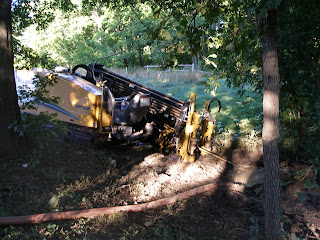The Garden Game
The Garden Game
The garden game is the only game where the player/gardener creates the pieces and the playing board. The rules are set in an ever changing but predictable environment, based on the local conditions and characteristics of the game-board. The game is played in an environment where the rules change as the game progresses. The game set-up can start months before with the design and installation of the playing board (the garden plot) and allowed to cure before any pieces/plants are positioned. The game ends either as the pieces mature or the conditions are beyond the games capacity to proceed. The game can end at anytime the player losses interest, but usually runs without the player, until the pieces are removed. Once started the game is difficult to end before its ready. A player’s gains can be counted, withdrawn, and banked at anytime, although the highest gains will come at the end. A successful game depends on the expectations of the player(s) and satisfaction of those expectations. Most struggling players do not continue playing after a certain loss or reduce the active area of the board to smaller confined space with fewer factors and pieces. Unfortunately, this makes the next game more difficult.
A player may be leading the game at first with successful placement of the pieces and gains in position with few losses. As the game progresses, the “pest players”; piece eaters, predators, competing plants, changing conditions and the player’s attention span, may take the lead. The pest players allow you to create the game any way you wish and respond in kind. The number of pest players depends on the strategy and design of the game board. Early decisions in game set-up and team building may allow for the changes and buffer the limiting factors.
Players new to the garden game may have little experience to draw from. They may use tactics and traditional methods with a thin and rigid strategy based on anecdotal information, simple design or techniques used by other players with different conditions. Seasoned players assess and allow for changing conditions. They front-load the game with contingencies to encourage a beneficial environment, mitigate losses, and buffer extremes. Excellent players invite a diverse team of other players that will mutually benefit and also play the game. They pick teammates to disburse the tasks of defending the gains and reduce the pest players to a manageable number. These beneficial teammates will not assist if treated as pests or ignored.
Rigid design of the board may hinder the response of the pieces to changing conditions, reducing the later gains or causing the loss of some pieces. The game board, designed by the player and prepared prior to start play, is the most crucial role in the success of the game. Once the pieces are in place and the game begins, it is very difficult or impossible to change the board without severe penalties.
Additional components may be added to the board at anytime. Replacing or amending depleted parts of the board is allowed without disturbing the pieces in play. Individual pieces can be quickly pulled, banked, and replaced without losses, as long as the board is not vulnerable to pest players in the process.
Upon completion of the game and final accounting, the board is cleaned of all remaining pieces, keeping in mind other team members may still be playing. Preparation and strategy for the next game begins. The board is allowed to rest, heal and cure until the garden games season opener.
More on the Garden Game soon.
Copyright 2010 Daniel Halsey


Comments